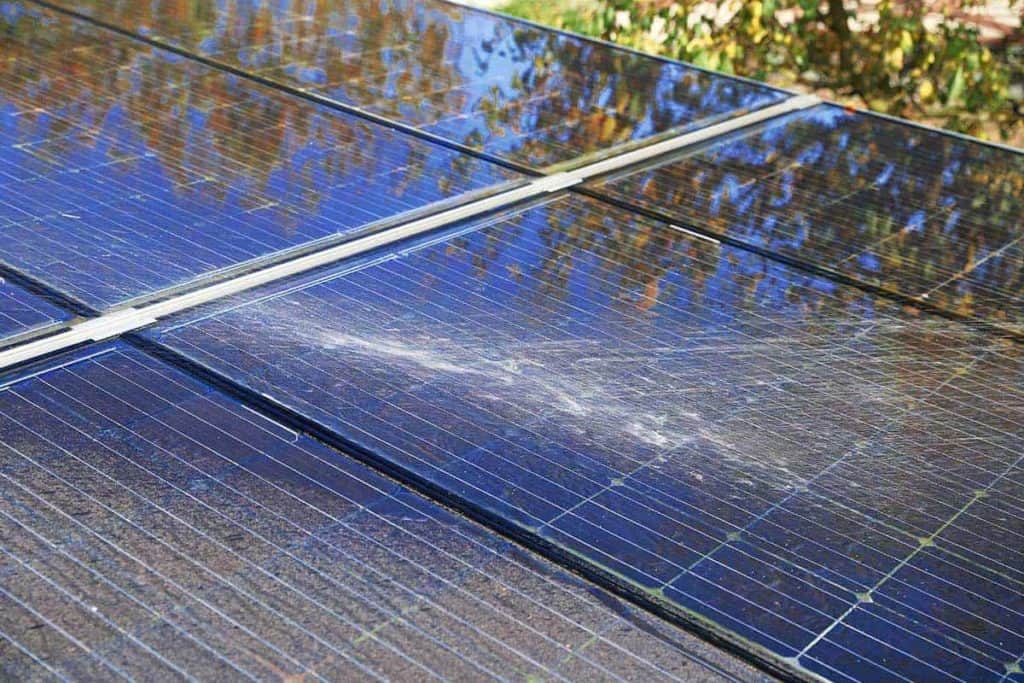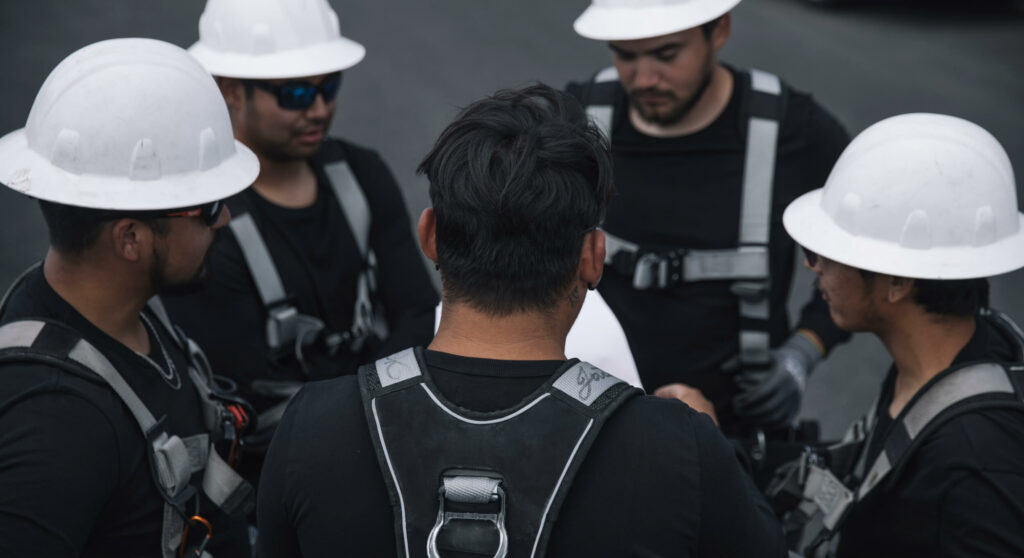Note: This blog was originally published in February 2021. It was updated October 5, 2023 to reflect recent changes. If you have any questions, please contact us.
Operations and maintenance, commonly called “O&M”, has grown from a simple service offered by engineering, procurement, and construction (EPC) companies for systems they built, to a dedicated market segment comprised of independent service providers and robust branches of solar contracting companies.
The maturation of the solar industry has also led to increased O&M specialization to address the more complex demands of both the market and the grid.
Regardless of whether solar contractors engage directly in O&M, it is important to understand — particularly given the long lifespan of solar systems and the ongoing need to ensure they generate as much power as possible.
In this article, we explore the following:
- What solar O&M involves
- Considerations for solar contractors regarding offering O&M services
- Working with other companies specializing in this space and the criteria for evaluating potential solar O&M partners
What is O&M?
Broadly speaking, O&M is a set of activities or programs that deals with the practices, tasks, and labor that help systems run properly and efficiently.
O&M includes a variety of basic functions such as: rapid problem identification and resolution, minimizing downtime due to faults, and comprehensive reporting and transparency.
What is solar operations and maintenance?
As you may have guessed, solar O&M is this same set of activities, but applied specifically to solar PV installations to help optimize how they produce energy.
There are several different aspects of solar O&M:
- Preventative maintenance: The routine inspection and servicing of equipment to avoid breakdowns and needless production losses
- Corrective maintenance: Repairs after a breakdown occurs to minimize unplanned downtime
- Condition-based maintenance: Using real-time data to predict breakdowns and prioritize activities and resources; offered by an increasing number of third-party integrators and turnkey providers
Each of these approaches employs a number of services, which can include: performance monitoring and diagnostics, energy forecasting, warranty administration, and preventative maintenance like module cleaning and vegetation control.
It can also involve integration with a third party for system commissioning, supervisory control and data acquisition (SCADA) upgrades, parts replacement, and re-roofing support.

Commercial O&M vs. residential O&M
Commercial and residential solar systems inherently differ in scale, complexity, and user demands, necessitating distinct approaches to Operation & Maintenance (O&M).
Commercial solar O&M
Commercial O&M often involves the management of expansive solar arrays, sometimes spread across multiple locations, making real-time monitoring, advanced diagnostics, and regular preventive maintenance critical. These setups often use sophisticated software and tools to ensure consistent energy production and to manage large amounts of generated data.
Residential solar O&M
Residential O&M is generally more straightforward, dealing with single-home setups. The focus here leans towards periodic checks, ensuring system safety, and maximizing longevity. While commercial systems may require specialized technicians trained to handle intricate and large-scale systems, residential O&M often centers around customer education, ensuring homeowners understand basic system functionalities and when professional intervention is required.
What does solar O&M entail?
At the heart of solar O&M are two critical pillars: maintenance and risk management. The maintenance aspect focuses on the regular upkeep and repair of system components to ensure they operate at peak efficiency, while the risk management aspect zeroes in on proactive measures to identify, mitigate, and manage potential hazards and challenges. Together, these elements work hand in hand to ensure the longevity, reliability, and efficiency of solar energy systems, setting the stage for a deeper dive into each of their specifics.
The maintenance aspect
Maintenance includes both scheduled and unscheduled elements. While scheduled services are outlined by equipment manufacturers’ product manuals, unscheduled maintenance involves fixing problems once they occur (fairly self-explanatory).
Scheduled maintenance lowers the frequency and cost of unscheduled work, ideally achieving a system that operates properly due to constant monitoring and clear recovery systems.
The risk management aspect
Risk management, another side of O&M services offered by some industry players, is the ability to identify what can go wrong and predict probability and consequences.
It enables PV owners and asset managers to effectively plan for unscheduled maintenance and mitigate issues. Risk management continues to develop as a distinct field, with a number of companies offering software and services to help ensure solar production.
Creating a foundation for lower-maintenance O&M
When a PV system is designed and built with the highest quality in mind, using complete software solutions, there can be fewer costs and less wasted time associated with O&M.
As an example, Aurora Solar’s Plan Sets Service not only enhances the speed and quality of post-sales processes but also provides peace of mind to design and engineering teams. It simplifies and standardizes the site data collection workflow, consolidating all the required information into a user-friendly intake form and automatically populating numerous fields within the form. It all takes place within Aurora’s sales and design tool, and includes features like AHJ identification. Once you’ve gathered the necessary site details, you can directly request a solar permitting plan set package from within the platform, including engineering stamps. The Aurora team reviews the site information, ensures compliance with all AHJ requirements, and delivers a permit-ready plan set package within 24 hours.

Including solar O&M in-house
There are a number of factors to keep in mind when assessing whether to add solar O&M services to your contracting business or expand your current offerings.
Benefits of in-house solar O&M
Benefits for solar companies that offer O&M services in-house include the ability to be your customer’s key point of contact from initial design and construction to maintenance over the long-term. This may mean lower costs for asset owners and greater value from each customer (increased customer lifetime value) due to the ability to maintain a relationship with customers for the 25+ year lifespan of their systems. This allows for more payments over time, as well as more opportunities for referrals or subsequent jobs.
Challenges with in-house solar O&M
There are also some important challenges to consider, however:
- Does your company have the necessary expertise and workforce?
- Can your team support these additional services without compromising your current design and installation commitments?
To effectively provide solar O&M services, a company needs to be able to address three areas of functionality: core systems, supporting systems, and management.
Core systems
Core systems include data monitoring systems and the data analysis capabilities to interpret results and identify problems. Appropriately skilled field personnel and strong engineering capabilities are also key.
Supporting systems
Supporting systems include protocols for efficiently running O&M operations, such as quality assurance systems, development of a comprehensive knowledge-base to assist with diagnosis of similar issues, and field tracking and measurement.
Management
Management entails having proper technical knowledge as well as the ability to oversee maintenance activities, in-house and subcontractor personnel, and inventory.
Your company also needs to be able to provide a comprehensive, precise assessment of the potential profitability of a system and the O&M risks and costs. This allows you to price and schedule your services in a way that is both accurate and in line with the asset owner’s risk tolerance.
Keep in mind, this process can be complex and may require robust software as well as a sophisticated approach to plant operational health, particularly if your company has a large number of smaller systems or larger commercial solar plants.

Solar O&M checklist for contractors
For solar O&M contractors, ensuring the seamless operation of solar installations isn’t just about efficiency — it’s about building trust and reputation in the industry. Here’s some of the requirements for providing top-tier service to your clients:
Detailed visual inspection: Conduct systematic examinations for damages such as panel cracks, discolored cells, and broken glass. A trained eye can catch issues that may be missed by the untrained observer.
Panel cleaning protocols: Using specialized cleaning equipment, ensure that panels are free from debris, bird droppings, and other obstructions, optimizing their effectiveness.
Advanced electrical checks: Employ diagnostic tools to detect corroded terminals, assess loose connections, and monitor any potential damage to cables or connectors.
Performance monitoring systems: Use professional-grade monitoring systems to continuously track energy output, enabling rapid detection of any deviations from expected performance.
Inverter health checks: Beyond just reading the display, delve into detailed inverter logs and software diagnostics to catch potential issues early.
Alignment optimization: Use tools and software to ensure panels are at the ideal tilt and orientation, taking into account local solar angles and potential shading.
Ventilation assessment: Ensure cooling systems are efficient, especially for inverters, to avoid overheating and potential system failures.
Battery health monitoring (if applicable): For installations with energy storage, conduct detailed battery health checks, monitoring charge cycles, potential leaks, and ensuring optimal functionality.
Safety protocols: Regularly test all safety devices, including ground fault protection systems and disconnect mechanisms. This not only ensures system safety but also complies with regional and national standards.
Detailed documentation: Maintain meticulous records of all inspections, interventions, detected issues, and implemented solutions. This not only helps in troubleshooting but also instills confidence in your clients.
The items in this checklist can help solar O&M contractors guarantee the longevity and efficiency of installations, ensuring satisfied clients and a strong industry reputation.

Considerations for outsourcing solar O&M
Working with an external company that specializes in solar O&M to manage O&M needs for the PV systems your company installs can have some particular advantages.
Benefits of outsourced solar O&M
Offering O&M in-house may require you to dedicate resources to activities that are not the core of your company’s focus, including attempting to fulfill commitments made by a sales team years earlier.
Therefore, a major benefit of outsourcing is that it can help your solar installation company maintain its focus on core services. Outsourcing to a contractor specializing in O&M also means PV system owners have a company that is completely focused on those services and that can provide guarantees regarding system availability and response times.
The types of solar projects your company works on are another consideration, as O&M needs differ between smaller residential and commercial systems and large-scale commercial and industrial plants.
Large-scale solar plants have particular needs that are sometimes most effectively managed by a dedicated O&M contractor. The paperwork can be extensive, complicated, and varied, and every site requires adequate staffing. An O&M specialist can be better equipped to manage multiple long-term contracts with layers of guarantees.
Additionally, making accurate predictions to plan for future O&M requirements can be challenging. This requires strategic evaluation of complex systems to know how to predict performance issues and budget for expected costs. A dedicated operations company may be better equipped in this respect.
Challenges with outsourcing O&M
There are a few potential challenges with outsourcing solar O&M. For starters, depending on how you set up the relationship with an O&M provider, your company may not get to stick with the customer from beginning to end, resulting in a lower lifetime customer value.
Also, taking on a relationship with another company for O&M puts your own company’s reputation on the line. A poor partnership could result in fewer referrals, fewer subsequent jobs, and a lower client retention rate. That’s why we recommend taking a few things into consideration before starting up a partnership.
What to look for in an O&M partner
If you’re considering developing a relationship with an O&M partner, there are a variety of factors to evaluate in potential partners. Solar Power World writes, “Outsourcing solar O&M is not just about technology and techniques, it’s about partnering with someone having an international perspective of the best practices in plant inspection procedures, quality assessment plans and checklists for maintenance.”
An effective O&M company does not simply provide preventive maintenance services. They must be able to fully monitor and analyze the performance of a system and work to ensure it is performing optimally.
The company should be able to follow plant inspection procedures and execute quality assurance plans. They should provide real-time monitoring, data analysis, and reporting for expedited fault handling and optimal use of resources. This should include periodic and preventive maintenance checks with IV curve analysis and thermographic imaging.
Certifications of company staff can also be a helpful indicator of competence. The North American Board of Certified Energy Practitioners (NABCEP) now offers an O&M certification, as does Solar Energy International. The team should also be fully-bonded and have clean safety records.

How to find an O&M company
For contracting companies interested in working with outside O&M partners, there is a variety of ways these relationships may be structured. An O&M provider can be a subcontractor to a solar contracting company, receive referrals from the contractor, or in some cases a third party can facilitate the relationship.
The relationship between a contractor and an O&M company is sometimes administered by an asset management company. For residential systems, the contractor can have a channel partnership with the asset management company who monitors the system. The asset management company brings in a third-party subcontractor to fix issues the contractor can’t handle. For commercial projects, the asset management company partners with the O&M contractor to execute services and, on a per project basis, creates O&M contracts or works with the EPC or warranty provider to structure O&M services.
Given the financial challenges inherent in solar PV O&M, such as budgeting for project performance and service needs far in advance, it’s important to look for an approach to O&M that suits the particular needs and abilities of your company, including what makes the most sense financially.
For all systems, one of the most crucial factors in ensuring the successful operation of a PV system over the long term is a solar contractor’s ability to deliver excellence in solar design and installation.
Beyond that, whether you choose to manage O&M in-house, work with a contractor, or refer your customers to an O&M specialist, consider what will best allow you to ensure optimal solar production and a good experience for your customers.
